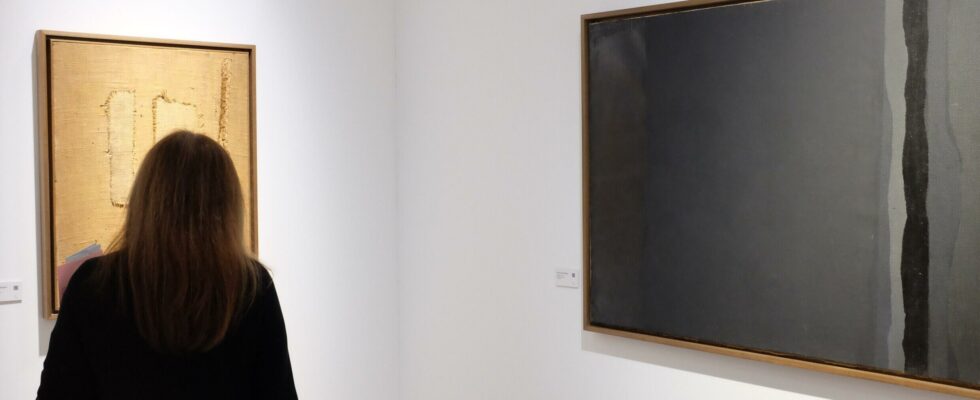A giant mushroom at Place Vendôme, a snake facing the Académie française or a yellow trash can suspended under the impressive glass roof of the Grand Palais. Art Basel Paris, the largest contemporary art fair in France (which replaced Fiac in 2022), has taken over the French capital until October 20. The beating heart is in the superbly restored Grand Palais, where 195 galleries from 44 countries welcome the general public from tomorrow. Among them, Loft Art Gallery, the first Moroccan gallery to be selected. Interview with director and co-founder Yasmine Berrada.
5 mins
RFI : Are you proud to be the first Moroccan gallery to participate in Art Basel Paris ?
Yasmine Berrada: It is very important for us and a great opportunity to promote Moroccan art internationally. This is a big step for us as gallery owners, since the Loft gallery has existed for fifteen years. But it is also very important as Moroccans and a source of pride to be able to be the first Moroccan gallery to represent Morocco in such a prestigious event.
In Europe, the art market currently looks rather difficult. Your gallery has been based in Casablanca for fifteen years and since this year also in Marrakech. What is the current state of the art market in Morocco? ?
The Moroccan art market is holding up well today. There is no feeling yet of this lull that we can hear about in the European market. But this is not our first international fair this season, and when we were in London, we still felt a slight slowdown. For the moment, we are managing to do well. Firstly because we are also presenting artists who remain within a relatively reasonable range in terms of price. And we had the chance to present artists in London who had huge success, even if it was a little more complicated than previous years. Regarding this participation in Art Basel Paris, I must say that the start was excellent, our stand was extremely well received and people are happy to see something new. They often discover Mohamed Melehi for the first time. As a result, the reception, whether from the press or from collectors, is fabulous.
On your stand, you present works by Mohamed Melehi. What is the basis of the fascination for this Moroccan artist, born in 1936, in Assilah, Morocco, flagship painter of the Casablanca School? ?
Mohamed Melehi is considered one of the greatest Moroccan artists. He died four years ago. He was the co-founder of the Casablanca School, considered a founding movement of modernity in Morocco. He is an avant-garde artist, who was able, in the 1960s, to establish a certain modernity, Moroccan-style abstraction, coming from Italy where he lived, then the United States. So, he came with a certain Western background and he returned to his country, Morocco, by joining the School of Fine Arts in Casablanca, then directed by Farid Belkahia. Together, they were able to revitalize all of that and establish a form of universal language with a Moroccan anchor. It was the birth of Moroccan modernity. He not only contributed to this modernity, but he also knew how to make it evolve in its contemporaneity. These waves, these curves, these undulations each time respond to the issues of his time. For that, he is a huge artist.
The few paintings exhibited on your stand are enough to notice a radical change in his art, from black painting to bright colors, to a radiant geometric abstraction.
The all black works are his Roman period. Then he goes to New York. He travels, he meets new artists, he is in the movement. In 1963, in Washington, he held a very large exhibition of formalists alongside very big names in the contemporary art world of the time, for example Mondrian, to name but one. And at that moment, color arrives. And this 1963 work from New York is absolutely flamboyant, even 60 years later.
Here, visitors to the Grand Palais in Paris are enthusiastic about your Moroccan paintings. How is it going in Marrakech or Casablanca? Do you mainly offer Moroccan artists or also North African, sub-Saharan or Western artists?
Initially and historically, our gallery is based in Casablanca. In recent months, we have opened a very large space in Marrakech which is today a global city. So we really have an audience of collectors from all over the world. Our gallery is a showcase for Moroccan art, but also for the art of the African continent and its diaspora. For us, it is essential to really create bridges and dialogues between the Western world and the African continent. And we realize to what extent the bridges and the dialogues are very present and much more obvious than we think.
► Art Basel Paris, from October 18 to 20, 2024, at the Grand Palais, in Paris.
